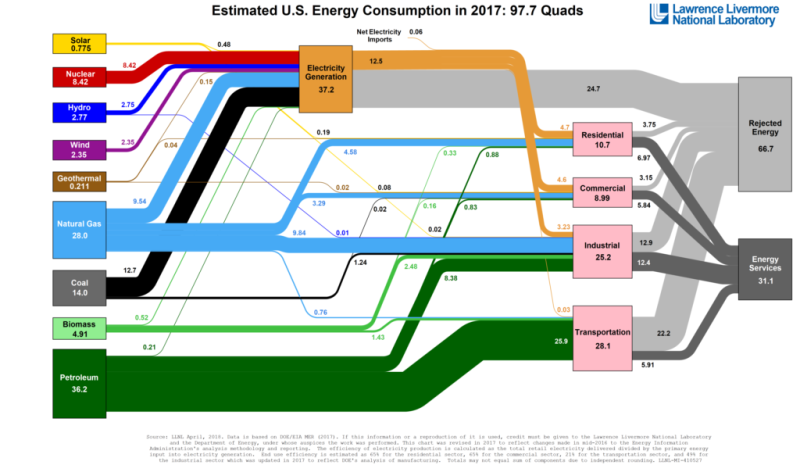Energy is the backbone of the modern society and fossil fuels are the backbone of the modern energy industry. According to the work by the Lawrence Livermore National Laboratory in their 2017 annualized Sankey diagram, nearly 80% of our energy comes from either oil, gas, or coal. That's in 2017; that's in the United States.
Other interesting takeaways:
More than 65% of the energy generated is "rejected" and turns into wasted heat. Huge opportunity to increase energy efficiency.
Oil generates nearly 40% of the total energy mix, and makes up more than 90% of the energy used in the transportation sector.
Natural gas is the most diverse energy source providing heating and electricity in the industrial, commercial, and residential applications. It is also used in the transportation sector.
Solar generates <1% of the total energy mix, and about 1.3% of the electricity generated.

As we continually debate prioritizing energy abundance, availability, reliability, and environmental impact, it is important to recognize that the best solution may be to minimize consumption. When we reduce our consumption, we also dramatically reduce our rejected energy which generates wasted heat.
Some easy tips to reduce your energy footprint:
Use public transportation.
Carpool to and from work.
Plan out your driving route and/or combine errands.
Adjust your thermostat a couple degrees up in the summer and a couple degrees down in the winter.
Turn off the lights as you leave the room.


